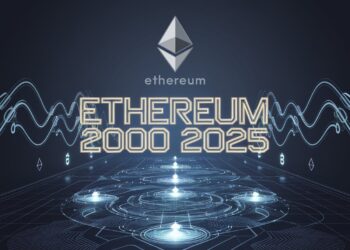Imagine a world where blockchain transactions zip through in milliseconds, leaving older networks in the dust. In 2025, this isn’t a dream—it’s Solana’s reality. A prominent investor’s bold move to swap $100 million worth of Ethereum for Solana has sparked heated debates: is Solana poised to overtake Ethereum as the go-to blockchain for decentralized applications? This article dives deep into why Solana is gaining ground, exploring transaction speeds, market trends, and the strategic shifts reshaping the crypto landscape.
The Solana Surge: A New Era for Blockchain
Solana’s meteoric rise in 2025 stems from its ability to process transactions at lightning speed while keeping costs low. Unlike Ethereum, which has long dominated the smart contract space, Solana boasts a unique architecture that handles thousands of transactions per second. This efficiency is drawing developers, investors, and users alike, fueling a surge in adoption that’s impossible to ignore.
Why Speed Matters in Blockchain
In the fast-paced world of decentralized finance, speed is king. Solana’s Proof of History mechanism allows it to process up to 65,000 transactions per second, dwarfing Ethereum’s current capacity of around 15-30 transactions per second. This gap becomes critical in high-demand scenarios like decentralized exchanges, where delays can cost users dearly.
Speed and scalability are the future of blockchain. Solana’s architecture is built for the next generation of decentralized applications.
– Anonymous Blockchain Developer
This speed advantage translates to real-world impact. For instance, decentralized exchanges on Solana have reported transaction volumes exceeding $500 billion in just three months of 2025, outpacing Ethereum’s $400 billion in the same period. Such numbers highlight why investors are rethinking their portfolios.
Proof of History
A cryptographic clock that timestamps transactions, enabling Solana to process thousands of transactions per second with minimal energy consumption.
The Investor’s Bet: Solana Over Ethereum
A high-profile investor’s decision to exchange $100 million in Ethereum for Solana sent shockwaves through the crypto community. This strategic move signals confidence in Solana’s long-term potential. But what’s driving this shift? The answer lies in market dynamics and Solana’s growing ecosystem.
- Cost Efficiency: Solana’s transaction fees average $0.00025, compared to Ethereum’s $2-$10, even with Layer-2 solutions.
- Ecosystem Growth: Over 1,000 projects, including memecoins and DeFi platforms, now operate on Solana.
- User Adoption: Solana’s active addresses surged to 220 million in 2025, nearly triple Ethereum’s 80 million.
These factors make Solana an attractive bet for institutional players. The investor’s swap isn’t an isolated event but part of a broader trend where funds are flowing into Solana-based projects, from gaming to tokenized real-world assets.
Solana’s Ecosystem: A Magnet for Innovation
Solana’s ecosystem is a hotbed of innovation, attracting developers with its scalability and low costs. From memecoins to decentralized finance platforms, Solana hosts a diverse range of projects. Notably, platforms like Pump.fun have turned Solana into a hub for memecoin creation, with thousands launched monthly.
| Metric | Solana | Ethereum |
|---|---|---|
| Transactions per Second | 65,000 | 15-30 |
| Average Fee | $0.00025 | $2-$10 |
| Active Addresses (2025) | 220M | 80M |
This table underscores Solana’s technical edge. Developers are flocking to build on Solana, drawn by its ability to handle high-throughput applications without breaking the bank. This influx is creating a virtuous cycle of growth, further solidifying Solana’s market position.
Ethereum’s Response: Can It Keep Up?
Ethereum isn’t standing still. Its developers are rolling out upgrades to boost scalability, with Layer-2 solutions like Optimism and Arbitrum reducing fees and increasing throughput. Additionally, Ethereum’s founder has unveiled a roadmap for 2025, promising sharding and other enhancements to close the gap with Solana.
Ethereum’s strength lies in its community and developer ecosystem. We’re not just competing on speed but on trust and innovation.
– Ethereum Core Developer
Despite these efforts, Ethereum faces challenges. Its complex upgrade path and higher fees continue to push users toward Solana, especially for cost-sensitive applications like microtransactions in gaming or DeFi. The question remains: can Ethereum innovate fast enough to retain its crown?
Ethereum’s upcoming sharding upgrade aims to boost its capacity to 100,000 transactions per second, potentially leveling the playing field with Solana by 2026.
Market Implications: A Shifting Landscape
Solana’s rise isn’t just a technical story—it’s reshaping the crypto market. As more investors and developers pivot to Solana, its market cap is closing in on Ethereum’s. In early 2025, Solana briefly surpassed Ethereum in decentralized exchange volume, a milestone that underscores its growing influence.
- Institutional Interest: Major firms are allocating funds to Solana-based projects, from ETFs to tokenized assets.
- DeFi Dominance: Solana’s DeFi protocols now manage over $50 billion in total value locked, rivaling Ethereum’s $80 billion.
- Memecoin Mania: Solana’s low fees make it the go-to platform for speculative tokens, driving retail adoption.
These trends suggest a broader shift in the crypto ecosystem. While Ethereum remains a powerhouse for smart contracts, Solana’s appeal to retail and institutional players alike is carving out a significant niche. The investor’s $100 million swap may be a harbinger of more capital flowing into Solana.
Challenges Ahead for Solana
Despite its momentum, Solana isn’t without hurdles. Network outages in 2022 raised concerns about reliability, though improvements have since stabilized the blockchain. Additionally, Solana’s rapid growth has sparked debates about centralization, as its validator requirements demand significant hardware.
Solana’s speed comes at a cost. We need to ensure decentralization doesn’t take a backseat to scalability.
– Crypto Analyst
Addressing these concerns will be critical for Solana to maintain its trajectory. Community governance proposals, like those debated in early 2025, aim to enhance decentralization and resilience, but the outcomes remain uncertain.
The Bigger Picture: Competition Drives Innovation
The Solana-Ethereum rivalry is more than a battle for market share—it’s a catalyst for blockchain innovation. Competition pushes both networks to evolve, benefiting users with faster, cheaper, and more accessible platforms. As Solana gains ground, Ethereum is forced to accelerate its upgrades, creating a dynamic ecosystem where no single blockchain dominates indefinitely.
Key Takeaways
- Solana’s speed and low fees are driving its adoption over Ethereum.
- Institutional and retail interest in Solana is reshaping the crypto market.
- Ethereum’s upgrades may close the gap, but Solana’s momentum is undeniable.
- Competition between the two blockchains fuels broader innovation.
As 2025 unfolds, Solana’s ascent challenges the status quo, forcing investors and developers to rethink their strategies. Whether Solana will overtake Ethereum remains uncertain, but its impact is undeniable. The crypto world is evolving, and Solana is at the forefront of this transformation. Will it sustain its lead, or will Ethereum reclaim its throne? Only time will tell.
The crypto market is a battleground of ideas and technology. Solana’s rise reminds us that innovation never sleeps.












